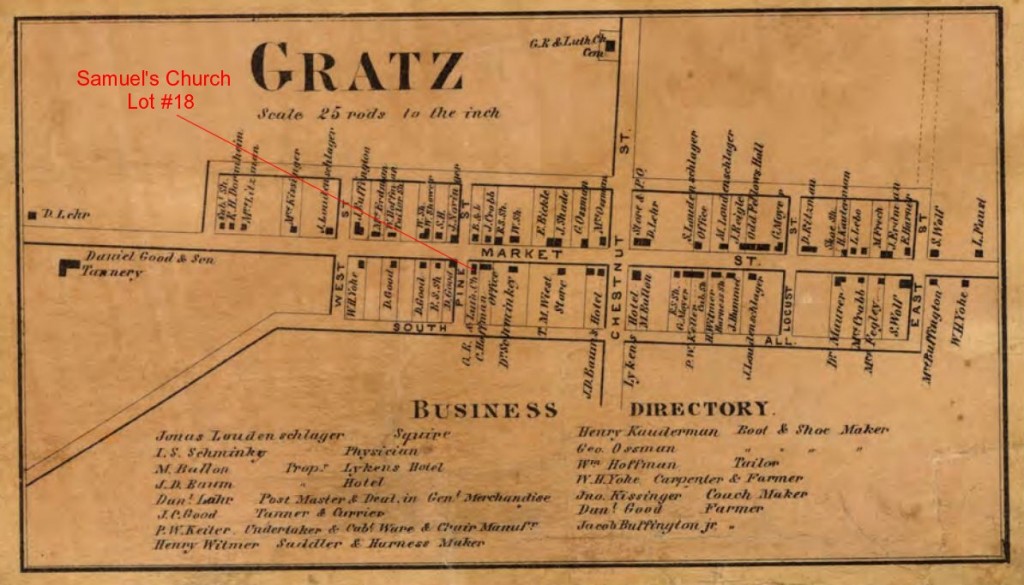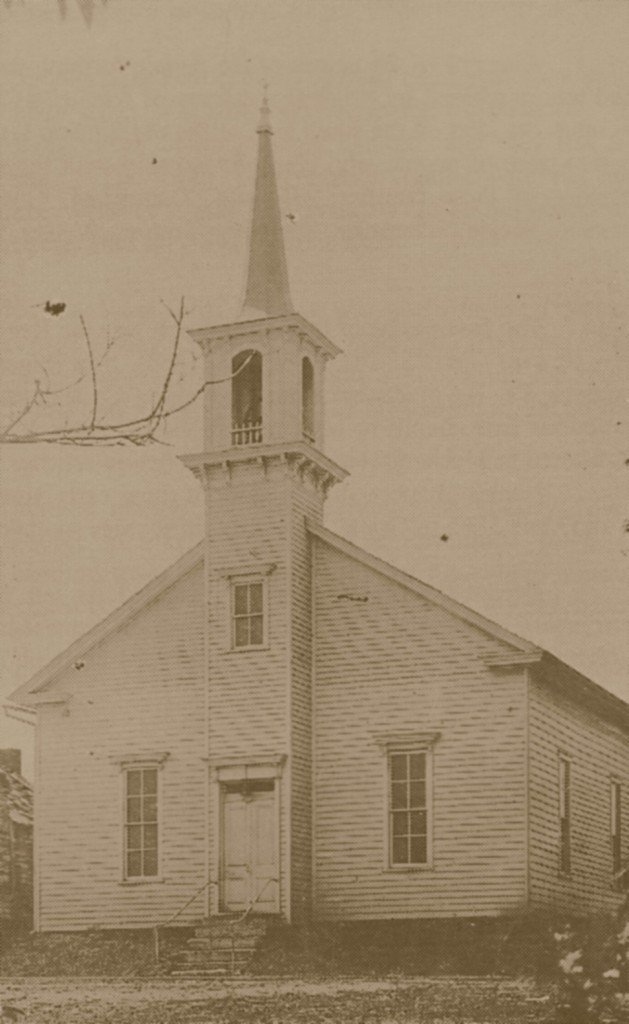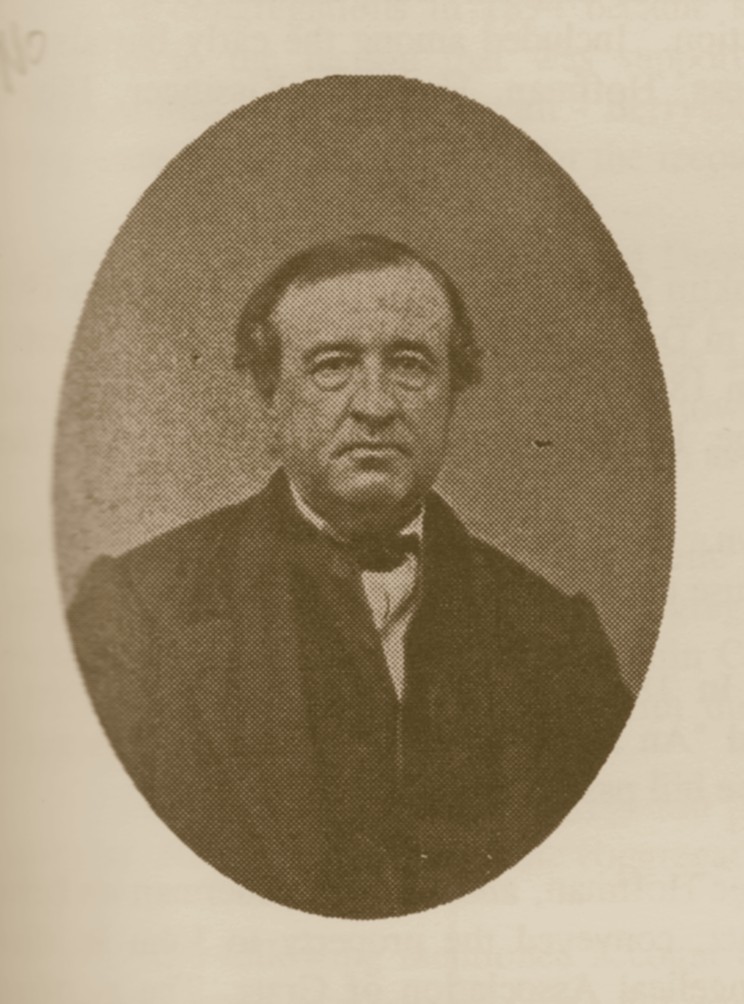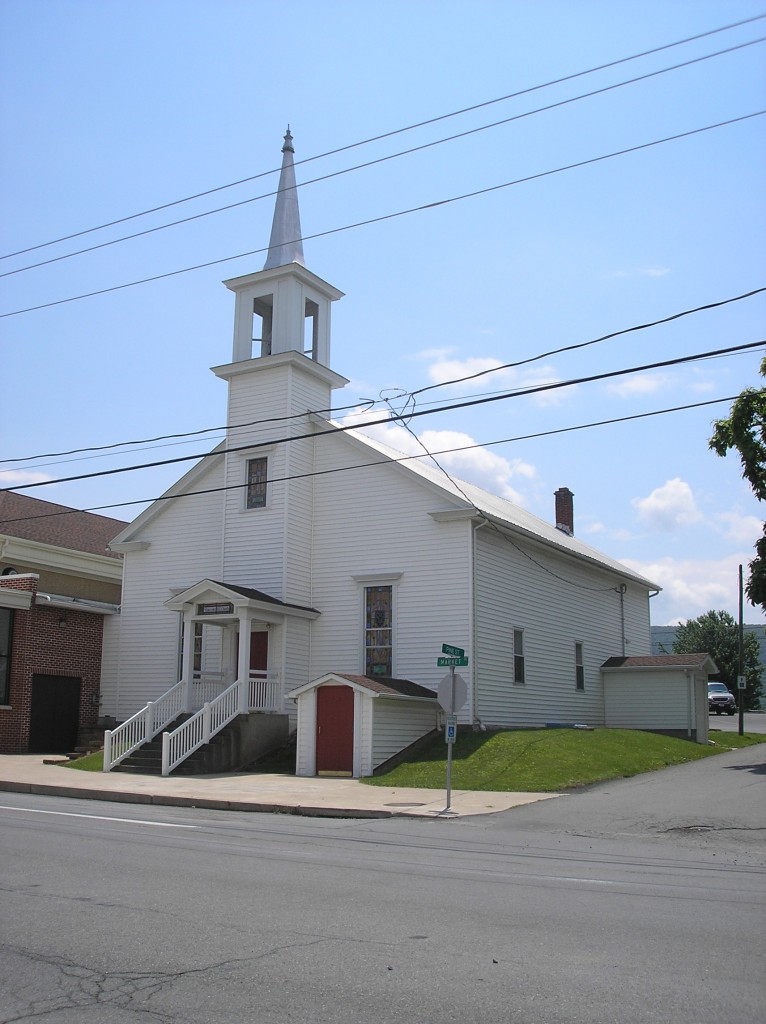Gratz During the Civil War – Samuel’s Church
Posted By Norman Gasbarro on November 28, 2011
Early records of this Gratz property, known on the Simon Gratz subdivision as Lot #18, indicate it was first owned by George Kissinger in 1815. The deed for the 1815 transaction is the earliest-found recorded deed of any of the original Simon Gratz lots. George Kissinger is not known to have erected any building on the lot, and in 1846, he sold it to George Hoffman, who only kept it for a short time before conveying it to John Kissinger and John Welker, trustees of the Evangelical Lutheran and German Reformed Congregation.
During the period of the 1840s, a period of unrest had occurred in many churches and Christians began to change their attitude toward traditional doctrine. These “New Measures,” as they were called, spread through the Lykens Valley and were felt at the Simeon Lutheran and Reformed Church where a group of “rebels” broke away and organized a new congregation. The result of this was the formation of the Evangelical Lutheran and German Reformed Congregation, which then sought land on which to build a church home. They purchased Lot #18 and the construction of Samuel’s Lutheran and German Reformed Church began in 1846. This original building still stands today but is no longer an active church. Late in the 20th century, the property was purchased by the Gratz National Bank, which has retained the exterior appearance of the building but re-modeled the interior for its headquarters office.
The only record of the names of the rebellious congregation members who left Simeon’s to form Samuel’s congregation is at the cemetery that was purchased just south of the old Simeon’s Church, now known as Section 1-South of the Gratz Union Cemetery. The surnames of individuals buried in this cemetery prior to the Civil War include Gise, Harner, Hess, Hoffman, Hummel, Kissinger, Moyer, Dubendorf, Ossman, Riegle, Schminky, Schreiner, DeWald, Strayer, Welker, and Yerges. Since these surnames are also found in the old Simeon’s burial ground, it is clear that families were split over the “New Measures” and this resulted in religious conflict in Gratz as the Civil War approached. Much more research needs to be done to determine how this religious split in such a small community had an effect on daily life just before and during the Civil War.
The earliest-found picture of Samuel’s Church is shown above and was probably taken in the first part of the 20th century.
The first minister of Samuel’s Church was Rev. Charles Franklin Stoever (1811-1880) who served the Gratz post from 1846 to about 1850. He was a Maryland native who had received his training at Gettysburg College and served his first congregation in Milton, Northumberland County. After he left the Lykens Valley, he went to Mechanicsburg, where he served from 1854 to 1873. As with the early congregation lists which were lost over time, so too was the list of ministers who served here. Other than some marriages that were performed in 1865 by a Rev. William Yost, no records have have been located that identify any clergy associated with this church.
By 1870, the small congregation decided to sell to the Evangelical Association of Gratz, which conducted camp meetings throughout the Lykens Valley. The camp meeting movement sought to take religion into the open air where massive meetings were held on hillsides. This Evangelical Association took over the Samuel’s Church building and held regular services there in addition to sponsoring camp meetings. There is a record of the ministers who served this church from about 1870 to the late 20th century, though no names stand out as having any Civil War military connections.
This is part 26 of an ongoing series on Gratz during the Civil War. Some of the information for this post was taken from the book A Comprehensive History of the Town of Gratz Pennsylvania.
 ;
;







Comments